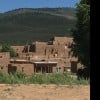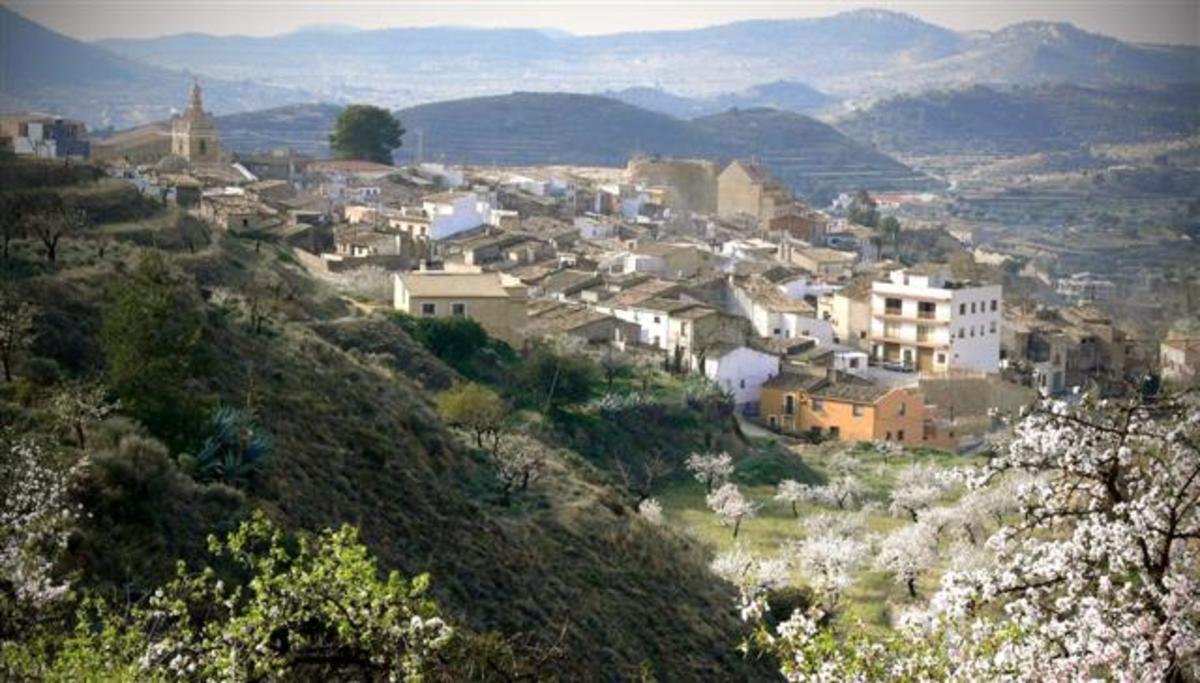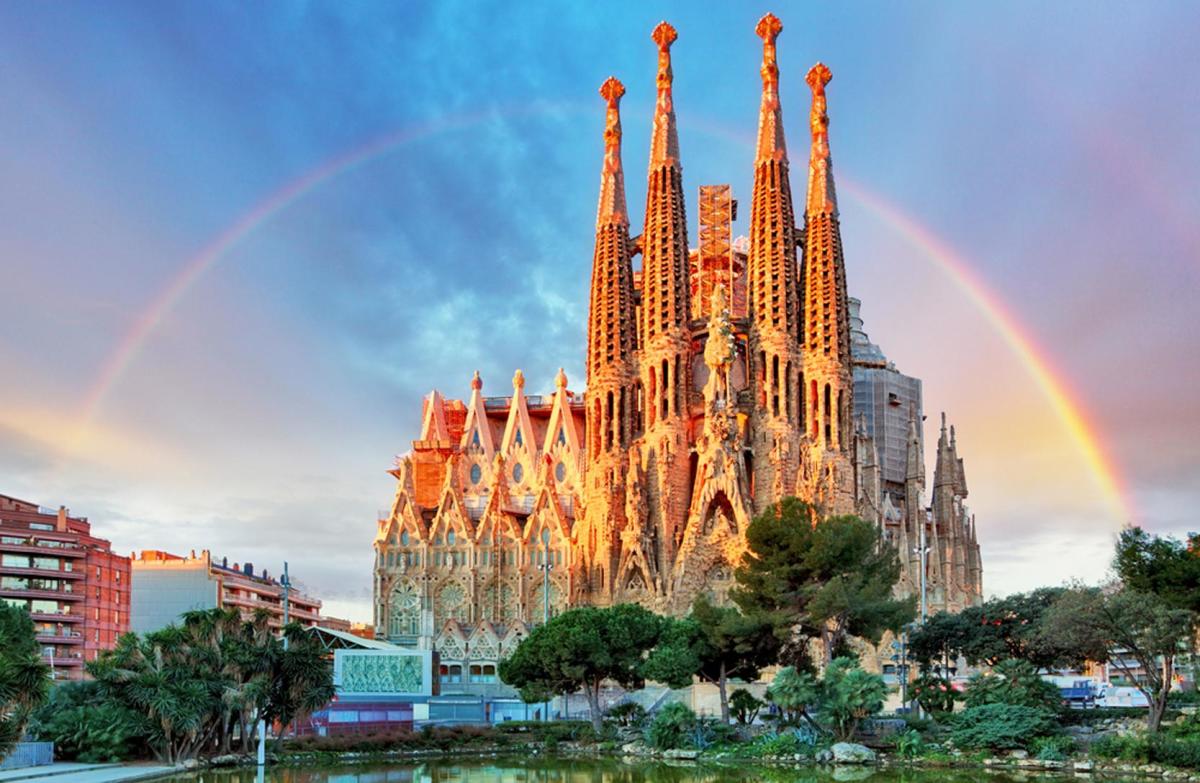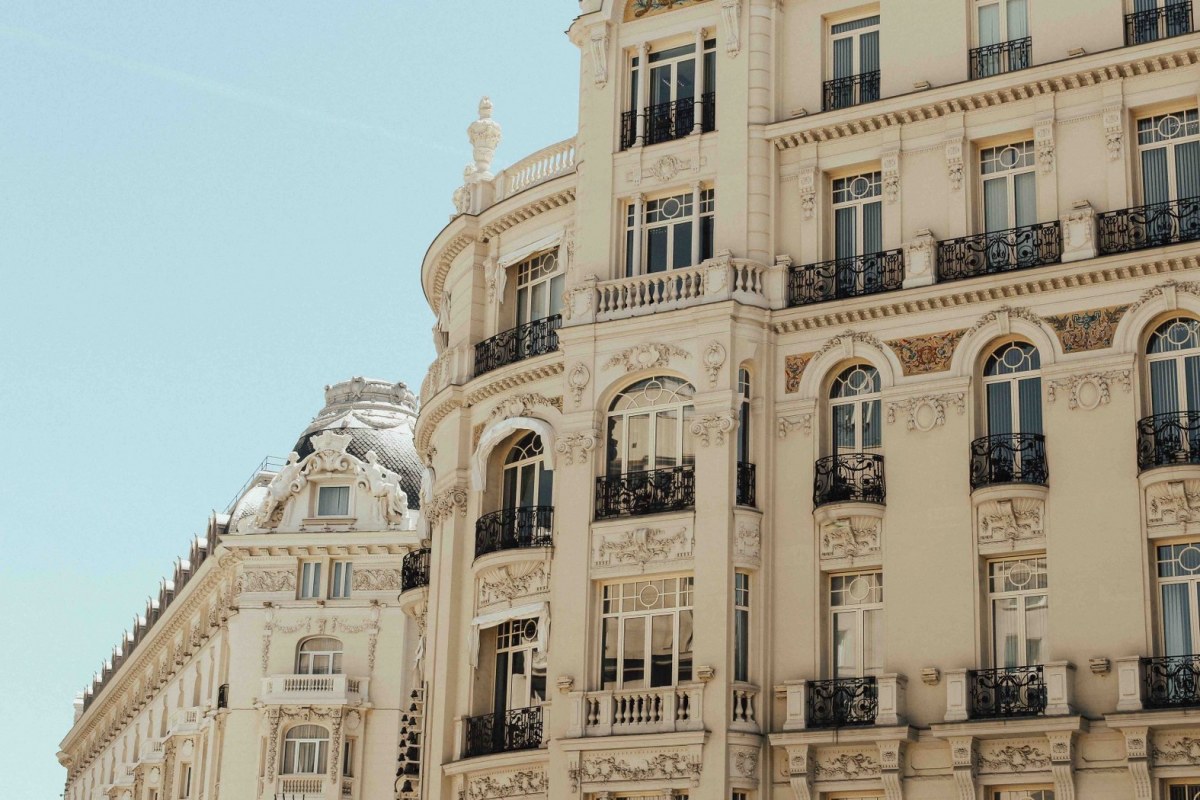Castilla Region around Madrid, Spain.
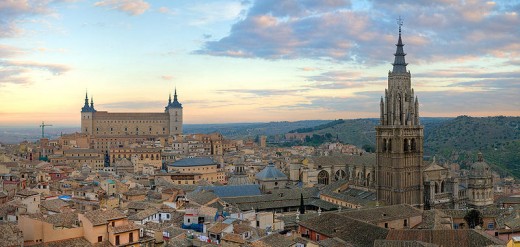
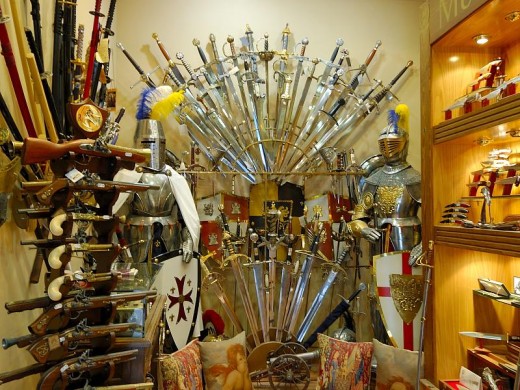
Toledo
Once you have seen Madrid, the rest of the region of Castilla is also beautiful to see. The above cities reflect what Castilla is all about. Castilla means castle and this is the region where castles from long ago were built in Spain in the ages past. Also, along with castles are some of the most beautiful cathedrals and synagogues around. Spain has quite a Jewish history and culture and the Jewish were not run out of Spain until 1492 with the Spanish Inquisition under Queen Isabela and King Ferdinand. Queen Isabela wanted a Catholic Spain and she got it.
The original capital city of Spain was Toledo. Madrid did not become the capital city until the 1700's. Toledo is approximately 50 miles southwest from Madrid and can be reached by car or bus. Here is a complete medieval walled city on the Tagus River. The original bridges, some built years before the 1500's still remain today and carry cars and buses into Toledo. Having been built in the Middle Ages, Toledo is a maze of small and narrow streets wide enough for only a single horseman. Small compact cars are all that can zip around these narrow streets. The focus of the town and in the main square is The Cathedral of Toledo. It's architecture style spans from early Romanesque to Gothic with spires that raise to the heavens. This is a must see, but all shoulders must be covered and no shorts are permitted inside the cathedral. It is Spain's grandest cathedral.
The Jewish synagogue and Jewish quarter in Toledo is also interesting to view. The synagogue was turned into a church by the 1600's, but walls, and columns are from the original synagogue. It is beautiful to view both inside and outside.
Also in Toledo is the home of El Greco, Spain's first important artist. Born in Greece, he ended up living his entire life in Spain, and the Spanish have adopted him as their favorite son. His original home in Toledo is open for touring and his most famous painting, El entierro de Conte Orgaz (The Internment of Count Orgaz) includes a self-portrait of El Greco in the painting. This is housed in St. Tomas Church within the city. Daily tours will enable you to view the painting.
Also interesting to see are the walls of the city and the sides of the buildings where the chains of those imprisoned during the Spanish Inquisition hang on the walls and preserve the memories of that dark time in Spain's history.
Sword making and sword shops are in abundance in the city of Toledo producing some of the beautiful medieval swords of long ago. And, the artisans in Toledo produce some of the most beautiful gold thread damask embedded in iron to produce jewelry and wall hangings are remarkable. Also found here are ivory and wood chess boards and chess pieces. These are all art forms from the medieval era and are found throughout the city of Toledo.
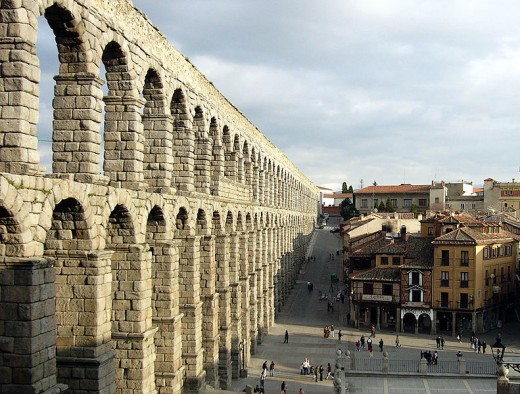
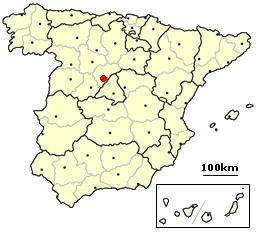
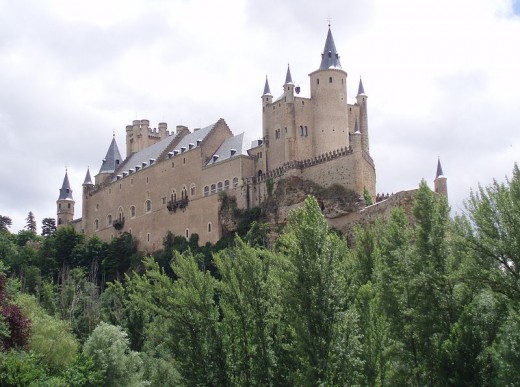
Segovia
Approximately 50 miles northwest of Madrid is the city of Segovia, steeped in history and architecture since 45 B.C. That's a long, long history. This city was originally founded by the Romans in 45 B.C. when the Iberian Peninsula was under the rule of the Roman Empire.
One of the significant structures the Romans built while here was the aquaduct. Each stone is perfectly carved to fit perfectly in its assigned spot in the aquaduct. No mortar was used between the stones. It is an architectural wonder and quite a remarkable and stunning structure to view while in Segovia. Along the very top is the trough and water today flows down the mountain and into Segovia for use in the city. What masters the Romans were at stone masonry and construction. As if this were not spectacular enough to see in Segovia there are some other structures you don't want to miss.
Up the hill and around the corner to the left you will come to the main square and the Cathedral of Segovia. It is huge with flying buttresses along the side and back of the cathedral to support the enormous structure. Again, it is in the main square and the city grew up around the cathedral and square. It is a sight to behold when lit up in lights at night.
A short ride to the edge of town and you will come to the Alcazar, which means castle in Arabic, as the Arabs or the Moors ruled Spain for 700 years. Their influence is seen in the architecture of this enchanting castle where Queen Isabella was coronated in 1492 and married King Ferdinand. The arches and carvings inside are examples of Arab influence. The original beautiful tapestries hang on the walls and provided warmth against the cold stone walls of the castle. This was Queen Isabela's favorite castle and she stayed here whenever she could and was not traveling throughout Spain uniting the country under her and Ferdinand's rule.
Fabrics, lace and tapestries are some of the goods produced in Segovia and the fine shops do offer handmade tablecloths, napkins, and tapestries for sale. One thing to watch out for in Segovia are the gypsies who will con you out of your wallets and money. They sell the machine made fabric goods and try to pass them off as hand made. Don't be fooled. Check the hemming and the machine threading on the back of the fabrics.
Segovia is really a charming small Spanish city to experience after the hustle and bustle of Madrid and the medieval history and art of Toledo. You can enjoy the outdoor cafes and watch the older and elderly men in their black caps and berets playing chess and dominoes at the cafes.
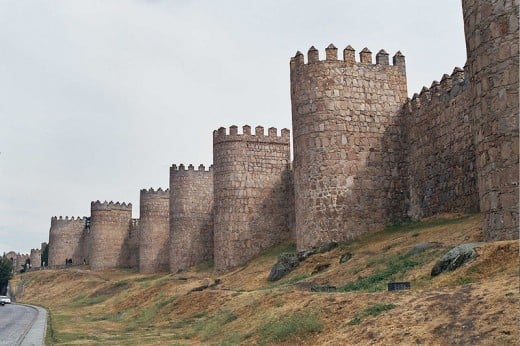
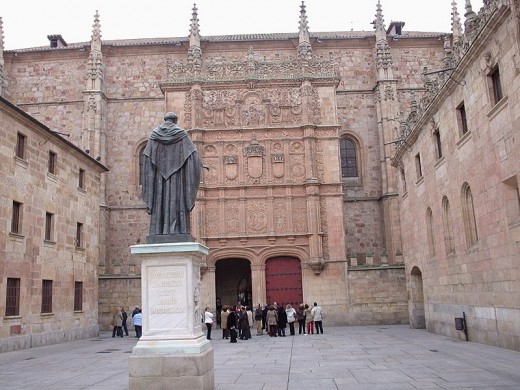
Avila and Salamanca
West of Madrid, again about 50 miles, is the lovely walled medieval city of Avila. The original wall and towers still stand today. If you want to experience a small Castillian town in Spain, this is the one to see. It is small, pristine, and a great place to just stroll the streets and visit the cafes and stores along the way.
The church of San Pedro and St. Teresa''s Square, the plaza mayor of Avila is charming to see. Here, the mystical Santa Teresa lived in the 1500's. She is the most famous person from Avila. Santa Theresa became a nun at at the young age of 15, and was part of a Dominican order in Avila. As she grew older she became very dissatisfied with the corruption of the Catholic Church and what she saw as inappropriate ways of the Dominicans. So she began the Carmelite order of nuns, who were very simple wearing scratchy wool habits and only sandals on their feet and began doing charity work to more emulate the life of Christ. She spent hours and hours each day in prayer and experience mystical trances and visions of Christ, God, and the Virgin Mary. She wrote of her mystical experiences for the Catholic Church in several books and an autobiography, which was very unusual for a woman for that time pertiod.
Touring the wall is a must and you can walk along the entire wall of Avila if you wish. The view of the Spanish countryside from the wall are magnificent. You are up on a plateau and see the beautiful arid countryside full of cattle and bulls. There are several bull ranches around this area where bulls are breeded for bullfighting. A short excursion to one of these ranches is interesting if you want to see how the bulls are breeded and fed. Also, some of the ranches have small schools that train young boys ages 15-19 to be fearless matadors for the bull ring.
After visiting Avila, if you continue west on the same road, again about 50 miles, you will come to the university town of Salamanca. Here is the home of the University of Salamanca and this is a vibrant city with a large population of students. The University of Salamanca is one of Spain's and Europe's oldest universities begun in the 1200's. Miguel Cervantes de Saavedra, the author of Don Quijote, Spain's greatest piece of literature, attended this university. His name is still written on the school building's graffiti from the 1500's. Today. students can study the humanities, literature, medicine, law, languages, history, music, dance etc.
Besides the university, Salamanca has the most beautiful Plaza Mayor of all in Spain, built in the 1800's in the baroque style. Here, like in Madrid, Spaniards meet here to socialize at cafes, walk and shop at the stores, and historical objects from Salamanca's past.
This charming city offers visitors the ability to see examples of middle-class Spanish families living in modern Spain. This city is, of course, very educationally oriented, but also very family oriented. You will see young professionals and their families everyday in the Plaza Mayor. There are, of course, other things to see here, but I have gone into more detail in my hub just about Salamanca you can peruse later.
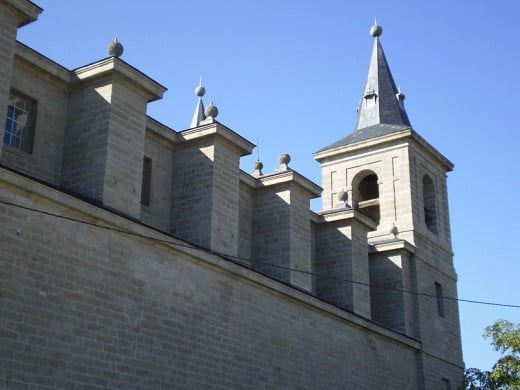
- Spain - Part III - Andalusia and the Costa del Sol
Visit the Andalusian region of Spain where flamenco dancing and bullfighting originated. See the lovely cities of Sevilla, Granada, and Cordoba. Then visit the Costa del Sol on the Mediterranean Sea.
El Escorial
About 50 miles northwest of Madrid is the palace-monastery, El Escorial, built by Philip II in the 16th century. It has always been used as a monastery, but Philip II also stayed here and had a residence here at the monastery. It was built to commemorate the Battle of San Quintin and was Philip's place of repose to escape the court and the hustle and bustle of Madrid. It was during his reign that Madrid became the official capital city of Spain.
It was named El Escorial, from the word, escoria. which means a wooded, forested area along with an arid climate. Here is a moderate and favorable climate and the summers are a bit cooler here than in Madrid. The Aulencia River from the Guadrama Mountains flows nearby and it is a quiet, peaceful. tranquile place.
Here is housed Spain's great historical library with books dating back to the medieval ages, hand written and illustrated by the monks. Special permission is required from the government to use this library as only monks are permitted to use it and care for it. These old and ancient books are kept behind glass and with a temperate climate to preserve them for antiquity. Some of the journals, letters, etc. written by Christopher Columbus to Queen Isabela when he was requesting her sponsorship of his voyage and navigation to the Americas are housed here. This is a remarkable and fascinating place and brings these historical figures such as Columbus alive when you can view these artifacts written by him.
Besides the beautifully furnish rooms and banquet halls, the room to see here is the mausoleum in the basement of El Escorial. Here are the tombs and remains of all of Spain's kings and queens over the ages with the exception of Queen Isabela and King Ferdinand. They are buried in the cathedral in Granada, Spain, to commemorate the final battle they had with the Arabs to finally drive the Arabs out of Spain. Their tombs can be viewed there.
Philip II had El Escorial elegantly built with marble floors, walls and window sills. The furniture is Spanish and French from the 16th century and is something to behold. Between the viewing the library and the mausoleum, you can spend an entire day at El Escorial.
When visiting Madrid, you need to spend at least a good week here so you can see the Castilla region around Madrid. This is the land of the castles and the monarchy and it gives you the feel for the country at large. There are four more regions in Spain to discover; Andalusia, Galicia, Catalonia, and Vasco. Each one is different and unique and each one has its own Spanish language dialect. Each region contrasts with the last and shows you a hearty, passionate Spanish people, united as Spainiards, but also culturally unique to their region. Spain, therefore, is never boring!
Related links
- Salamanca, Spain - a beautiful university city in the Castilla and Leon region of Spain.
See and read about the lovely city of Salamanca, Spain, the home of the University of Salamanca since 1218. It is a great place to study and has a thriving Spanish and international student population. - Generalisimo Francisco Franco and the Valley of the Fallen - Spain
The Valley of the Fallen - Spain. The Spanish Civil War was one of the most difficult, horrific, monstrous, and dividing of wars. It was hard fought on both sides, but the Nationalists, lead by Generalisimo Francisco Franco, were victorious in... - Santiago Calatrava - Spain's Modern Architect
- Barcelona, a contemporary Spanish city on the Mediterranean Sea
Barcelona, Spain is an exilerating, modern city to visit when traveling, full of great food, art, architecture and night life.
